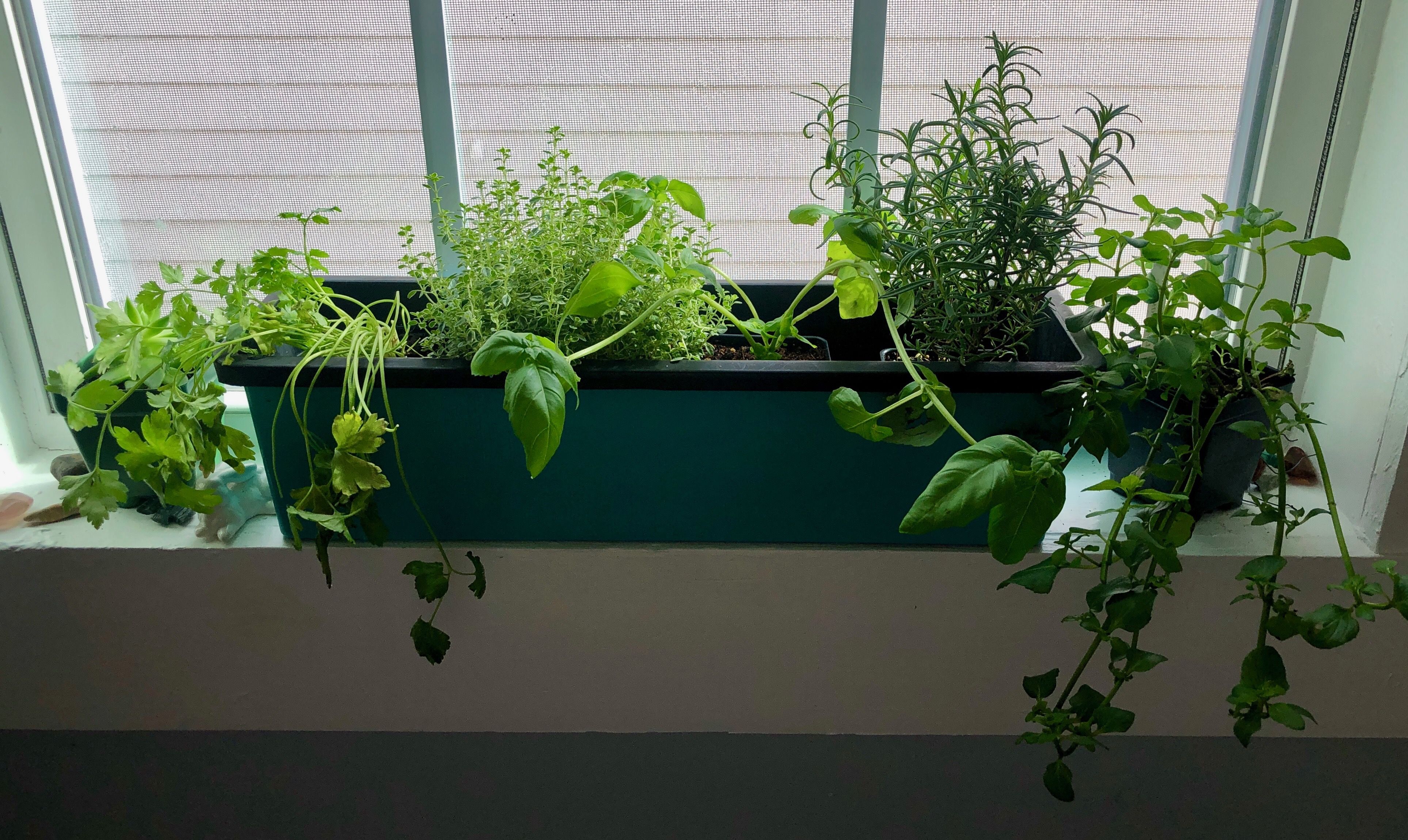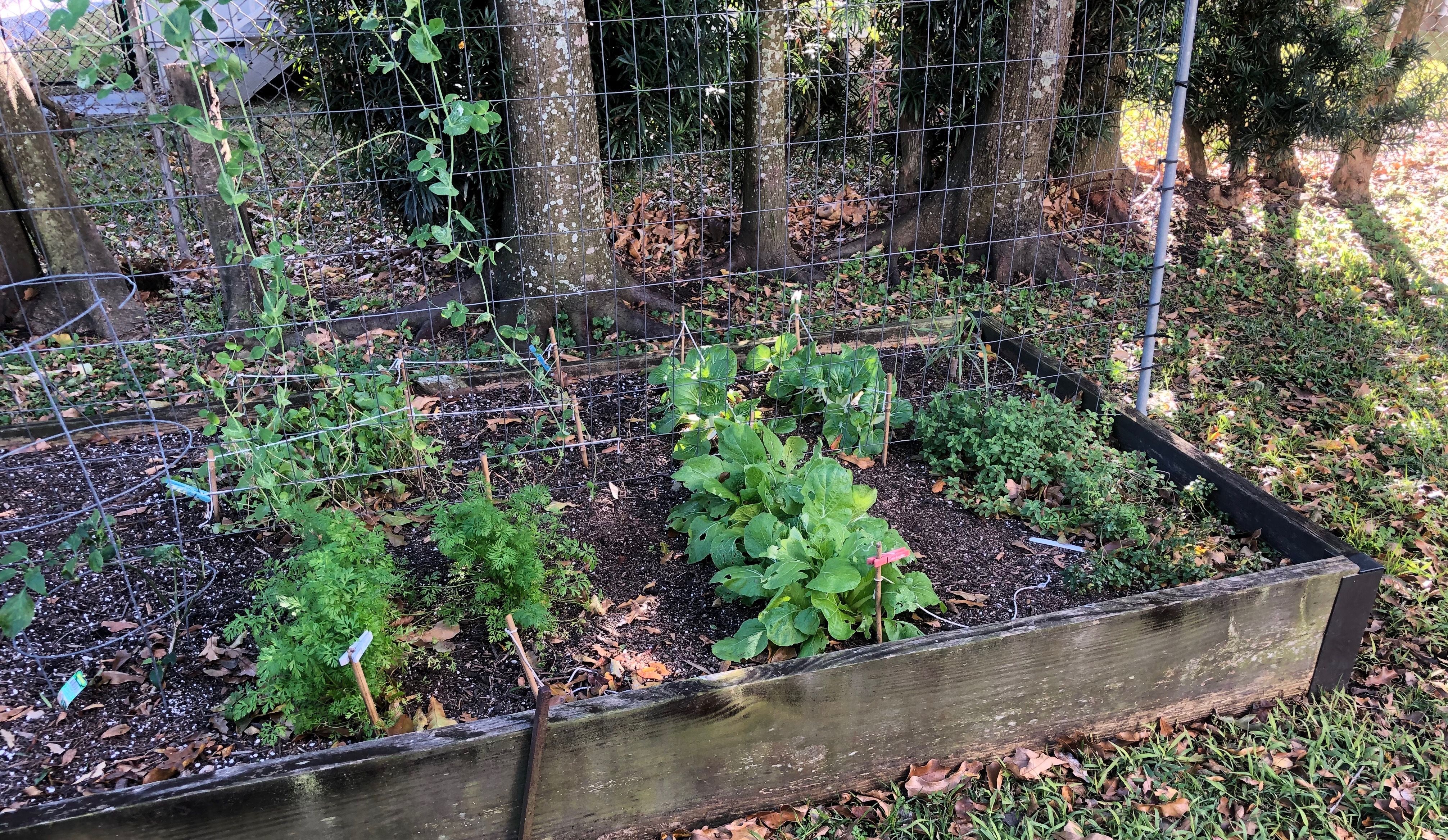It's March! We're at the tail end of winter and the awakening of spring, which means lots of beautiful days and fresh blooms, but also unpredictable, fluctuating temperatures here in Louisiana. As a gardener, that means that it's time to plant your heartier cold-weather vegetables that can withstand the sudden changes, seeds for your spring edibles, and everything that falls into the category of year-round indoor greens.
What sort of space do you have?
You don't need a big backyard to become a burgeoning gardener. As long as you've got sunlight, you can grow happy little plants in window sills and happy larger plants on porches. Certain vegetables need more room to spread, and for that, a yard affords exciting opportunities.
What grows indoors?
Herbs! A kitchen garden can provide a few fresh greens to top off soups and salads. You'll usually have great luck with basil, thyme, rosemary, mint, and parsley.
What should you plant outdoors (early March)?
Summers in Louisiana are harsh, so while most plants love sunlight, the heat can really get to them. Here's the list of winter vegetables that you can plant in the first half of March that should thrive through spring: beets, broccoli, cabbage, carrots, snap beans, lima beans, collards, mustard greens, kale, kohlrabi, lettuce, non-sweet potatoes, radishes, spinach, and turnips.
What should you plant outdoors (late March)?
In the second half of March, we're officially into spring, so it's time to plant your more summery edibles: chard, corn, eggplants, okra, peppers, pumpkins, squash, tomatoes, cantaloupes, and watermelons.
Observations:

"After the danger of frost has passed" is such a poetic-sounding phrase. Up north, that day is a moving target, as frost can come when you least expect it. In Louisiana, it's safe to say that March 20, the marker of the spring equinox, is your last day of concern. If you would like to jumpstart your outdoor plantings before then, just give the seedlings lots of sun, and love and water and keep them inside until the later end of March.
Tips for indoor herb care:
Herbs grown inside in window sills don't need much except for direct sunlight and attention to watering. Each herb will dry out at different rates. Basil happens to love water, so keep a plastic cup under it for maximum absorption and check each pot's soil for moisture every day.
Don't overwater, and make sure to remove a third of the leaves or less when you're clipping them for use.
Tips for outdoor herb care:
Herbs grown inside will rebloom and sometimes double in size, but herbs grown outside can grow to be impressively enormous. Basil, mint, lemon verbena, rosemary, and sage can handle the Louisiana summers. Thyme, lavender, and catnip need to be in partial shade, as the constant sun is too much for them, but they make especially contented indoor plants and are ideal for shady porches. Parsley, cilantro, chamomile, dill, oregano, chives, and garlic can be outside in the spring, but will recede as summer approaches.
Flowering herbs:
When your herbs start to flower, it's a beautiful sight. Blooms can pop up in surprisingly brilliant pinks and yellows and purples. At this point, your plants will become pollinating stations for bees and butterflies. The tradeoff is, the plants will stop growing larger and potentially become bitter as their focus shifts to giving the flowers the nutrients they need, rather than the leaves. If you want to keep growing and eating your herbs, snip the flowers off. If you have enough space, divide the plant and keep one half for you and one half for your flying friends.

Planting vegetables:
Vegetables just don't get enough light inside, but if you've got a porch, you've got options. Peppers and tomatoes are vertical growers and do very well in pots with full sun. Turnips, spinach, radishes, rutabagas, mustard greens, celery, chard, collards, and lettuce only need to be planted a few inches from each other, so they do well in raised beds and pots, as well as in the (fertilized) ground. They can be interchanged with herbs, as long as enough space is given for each row of seeds to thrive. The more space, the more thorough weeding, and the more pulling up of microgreens you do to uncrowd your plants once the seeds successfully sprout, the larger they can grow. Corn, cucumbers, eggplants, okra, potatoes, pumpkins, and watermelons need a generous amount of space to spread, so they can only exist in the ground.

Vegetable hot tip:
Lettuces are a great starter vegetable. You can interchange breeds to get beautiful colors. They're quick growers, so you're not sitting around for months waiting for an eggplant to reach maturity. Just make sure, as a general rule, that you never take more than a third of the leaves at a time. You can actually chop the whole lettuce head down to a half-inch from the dirt twice in its growth cycle and wait for the entire thing to sprout back up—after two reincarnations, however, the plant starts to get bitter and inedible.
Roses
For pops of color, there's nothing like roses. While February is the ideal month for rose care, we haven't missed out entirely. Drift roses, which are technically shrubs, grow happily and easily in Louisiana. They're low-maintenance, can thrive in large pots or in the ground, spread, and produce multiple blooms many times throughout the warm months. They need full sun every day and a lot of drainage, but as long as the soil isn't too wet, your drift roses will bloom and bloom!

